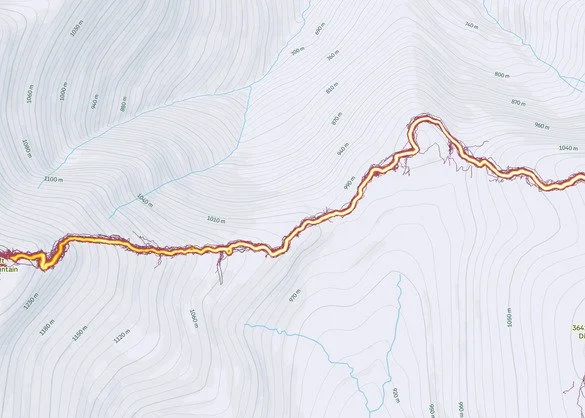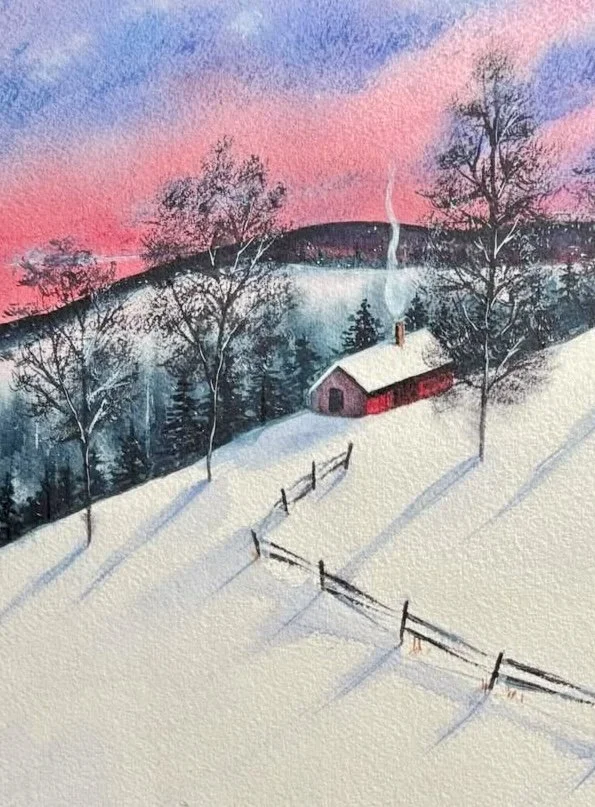Paving new trails in the Catskill High Peaks, responsibly
Have you ever noticed the landscaped islands around shopping centers? And the brown foot paths cutting the corners, run down by folks cutting through the parking lot over and over again, stomping through and leaving bare paths of dirt in between those boring parking lot shrubs? Now picture that, but in a mountainous-scale. That’s what’s happening in the high peaks in the Catskills: with no official trail designated, hikers are making their own path on former trailless routes, and impacting the flora and fauna along the way.
Montane birds – which include Dark-eyed juncos, Blackpoll warblers, Yellow-bellied flycatchers – breed in the dense and spruce-fir habitats found only at high elevations in the Catskills. Bicknell’s Thrush, a threatened and endangered species, is found on many high peaks, and was first ID’ed on Slide Mountain in 1885, and was recognized as a distinct species in 1995. Researchers with the Department of Environmental Conservation have been monitoring how bushwhacking affects these ground- and near-ground breeding birds as visitation and the trail network has expanded.
Not only does bushwhacking threaten these birds, but, as seen in those parking lot trails, according to the DEC, going off course compacts the soil, creates areas of rapid erosion, exposes tree roots, reduces the canopy and tree cover overhead, and increases the opportunity for invasive species to be introduced in these areas. Most of the ecological damage usually takes place on steep slopes and on mountain summits, where hikers gather for a longer period of time.
Visitation to the Catskill High Peaks has “exploded in these areas” since the pandemic, the DEC says, with check-ins increasing over 500-percent at several summits. The result: a transition into more degraded trails, and further impacted ecosystems as hikers bushwhack into areas that were previously untouched. A brand new “herd path” has also been established in a former trail-less area, which officials expect is “a result of a hiking challenge” from a popular hiking app.
Research from the DEC has indicated that “the current levels of visitation are occurring are not sustainable,” and that management interventions are necessary on these formerly trail-less peaks to “prevent long term damage to natural resources.”
Above: STRAVA heat map image of Rocky Mountain, an unmarked Formerly Trailless peak. Visitor-created, informal trails significantly fragmented the landscape.
STRAVA heat map image of a high use marked trail in the Slide Mountain Wilderness. The marked trail consolidates foot traffic resulting in minimal landscape fragmentation.
This week, the Department of Environmental Conservation will be holding a virtual public meeting to further discuss these impacts on formerly trail-less peaks in the Catskills that are over 3,500 in elevation, and ways to mitigate foot traffic.
The virtual public meeting on the draft Formerly Trailless Catskill Peaks Visitor Use Management Plan will take place on August 6, 2025 at 6pm. The draft plan is available for public comment through Monday, September 15, 2025. Comments may be submitted by emailing catskillpark@dec.ny.gov or via mail: c/o Pine Roger’s at NYSDEC, 21 South Putt Corners Road, New Paltz, NY 12561.
To learn more about monitoring efforts and to see previous reports documenting the adverse impacts of informal trails on the Catskill High Peaks, visit DEC’s website.
Here is a link to a draft visitor use management plan for the Formerly Trailless Catskill High Peaks: https://dec.ny.gov/sites/default/files/2025-07/formerlytraillesscatskillhighpeaksump.pdf
Support Hudson Valley news + events
ADVERTISEMENT:

































